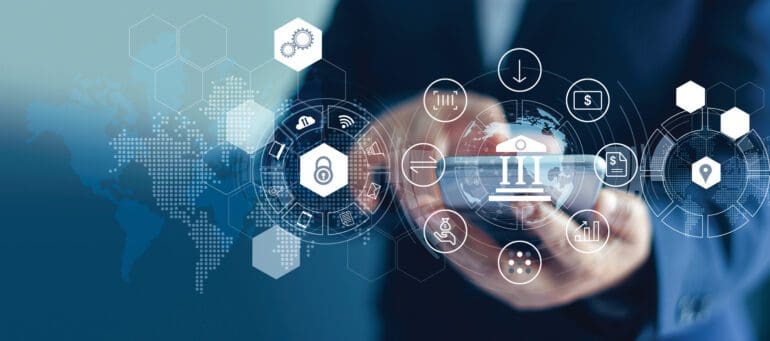According to Cornerstone’s 2023 What’s Going On in Banking report, 94% of banks have already embarked on a digital transformation strategy—or plan to do so by the end of 2023. This is a pretty convincing data point, and it leaves little doubt that FIs are doing everything they can to modernize. And yet very few FIs are near the end of their modernization journey, which means significant opportunities remain.
For FIs, modernization can take many forms. One of the most obvious is the adoption of emerging technologies like cloud computing, APIs, machine learning and blockchain. At a more granular level, FIs are focused on modernizing around various themes like digital onboarding, digital lending initiatives and fraud management.

From our conversations with FIs at Peach Finance, we’re most familiar with initiatives related to modernizing core lending infrastructure—that is, loan management and servicing software. Because of the inherent complexity of lending software, modernization can feel risky due to the possibility of service interruptions, loss of data integrity and compliance violations. With potential downsides like these, it can feel like there’s never really a good time to take the plunge into lending modernization. But the longer FIs wait, the further behind they find themselves in terms of their flexibility, customer experience and support for novel product constructs.
So the question becomes, When is the least bad time to modernize? Generally speaking, FIs have more to lose when the economy is booming and credit is flowing. During these times, the risks of modernization loom larger and it can be harder to justify taking your foot off the gas to make platform improvements. So it’s times of economic uncertainty—such as we find ourselves in now—that may be the best opportunity for FIs to invest in modern lending infrastructure that positions them for future growth.
There are a few key areas of lending infrastructure where FIs should consider accelerating their modernization efforts.
1. Loan management system configurability
The loan management system (LMS) is the heartbeat of lending programs in the sense that it determines lenders’ flexibility to launch new products, accommodate evolving regulations and make product configuration changes on the fly. LMS modernization can go in a couple of different directions. The most comprehensive approach is for lenders to migrate their existing lending portfolios onto a new LMS. This can give FIs the flexibility of a fintech, but, depending on the new LMS, the migration process can sometimes (though not always) be time-consuming, resource-intensive, expensive and risky.
Another approach is to launch a new lending program using a modern LMS provider while continuing to run existing lending programs as-is. This circumvents the migration process temporarily, while offering a couple of advantages. For one thing, it gives the FI a chance to prove out the value of their new LMS provider. For another, it gives the FI’s internal team time to learn their way around the new LMS. If all goes well, the FI can migrate their entire lending portfolio at a later time, once their teams are comfortable with the new LMS. One drawback to this approach, however, is that it requires the FI’s operations team to learn and use two systems simultaneously.
2. Modern collections technology
Lenders with modern collections technology have a leg up when it comes to collecting on delinquent accounts. Whether it’s robust loan modification tools, automated collections campaigns, or robust reporting and analytics, modern collections technology can significantly improve recovery rates and enable lenders to better withstand credit downturns.
3. Robust borrower self-service
We always hear about the importance of the user experience, and we’ve seen many FIs double down on the speed and ease of account opening in recent years. But what if delighting customers didn’t stop once the account was opened? Lenders can now offer borrowers unexpected flexibility in managing their account—for instance, empowering them to customize their due dates—without even having to reach out to an agent.
4. Integrated agent tooling
Lenders’ LMS, CRM, agent portal, communications and collections tools are all highly interdependent. Lenders whose technology platform can seamlessly integrate all of the above enable them to unlock vital operational efficiencies—whether in the agent experience or in the ability to leverage nuanced borrower and loan data.
5. Automated compliance monitoring
Every lender wants to get better at compliance while reducing manual effort. Modern lending software can make life easier for lenders, handling things like borrower status monitoring, scanning of outbound communications and automatic ledger recalculations for SCRA interest-rate adjustments.
For all these reasons, it’s in the best interests of FIs to prioritize their lending modernization initiatives sooner rather than later. And, somewhat counterintuitively, periods of economic uncertainty are often a good opportunity to do so. Though modernization is never easy, the rewards awaiting FIs—the ability to offer novel product constructs, deliver a better user experience, realize improved collections recovery rates and more—are worth the effort and can deliver a huge boost to future growth.


